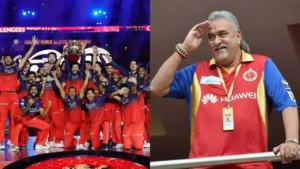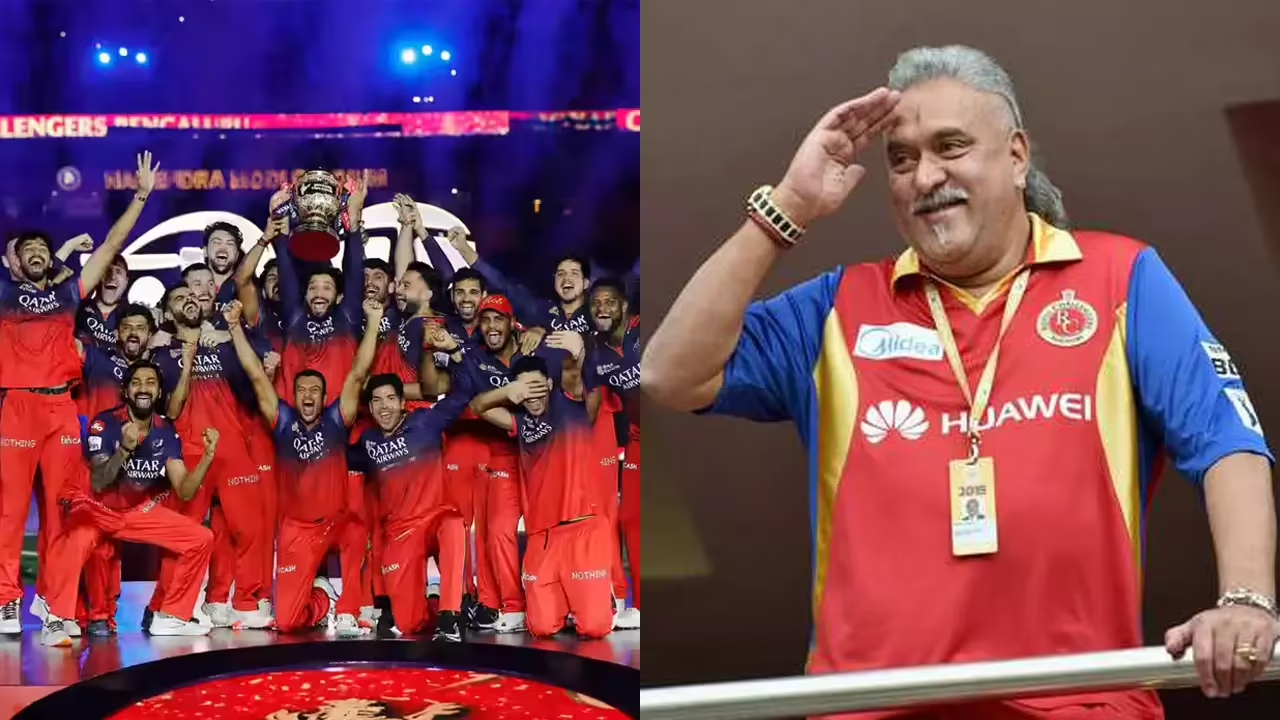Table of Contents
Toggle🧠 Sports as a Business Strategy (Tool)
In modern business, few platforms offer better engagement and emotional connection than sports. From football clubs in Europe to cricket franchises in India, owning a team is no longer just about passion—it’s a full-blown sports business strategy.
Vijay Mallya, the flamboyant tycoon behind Kingfisher Airlines and United Breweries, was one of the earliest Indian business leaders to leverage cricket—not just for profit, but for branding dominance. His ownership of the Royal Challengers Bangalore (RCB) in the Indian Premier League (IPL) is a case study in how sport can be business, marketing, and image-building—all rolled into one.
🏏 RCB’s Founding: Mallya’s Vision for a Cricket Empire
When the IPL launched in 2008, Mallya purchased the Bangalore franchise for a whopping $111.6 million, making RCB one of the most expensive teams of the first season. In the podcast with Raj Shamani, he proudly said:
“I paid the highest price… because I believed in cricket and what IPL could become.”
Mallya’s RCB vision wasn’t just cricket. It was:
Brand synergy (RCB + Kingfisher = premium lifestyle)
National visibility through sport
Engagement with Gen Z and urban youth
He was building an ecosystem where entertainment, business, and personality merged.
💸 Financial Aspects: Costs and ROI of Owning an IPL Team
While critics questioned the cost, Mallya saw long-term value. Here’s why:
IPL revenue models ensured share in central broadcasting rights
Team merchandise, ticketing, and sponsorships added substantial income
Association with stars like Virat Kohli and AB de Villiers built brand appeal
In the early years, RCB may not have won titles, but they won eyeballs—and eyeballs convert to money and equity.
Today, RCB is among the top 3 most valuable IPL teams, with a brand valuation exceeding ₹900 crore, long after Mallya’s exit.
🔥 Branding: How RCB Boosted Mallya’s Image
At its peak, the sports business strategy RCB enhanced Mallya’s:
Persona as the “King of Good Times”
Connect with youth and pop culture
Brand cross-promotion for Kingfisher and other UB Group products
RCB parties were infamous. Mallya, in the VIP section, sunglasses on—even when indoors—was branding himself as a lifestyle mogul.
Even when Kingfisher Airlines was nose-diving, RCB kept his brand relevant.
🎯 Lessons: Using Sports for Marketing and Engagement
For marketers and founders, Mallya’s RCB playbook offers real takeaways:
✅ Emotional Engagement: Fans form bonds with teams that transcend logic.
✅ Mass Reach: One cricket match = millions of impressions.
✅ Brand Personification: Mallya didn’t own RCB; he was RCB.
✅ Cross-marketing potential: Airline ads during matches, beer at parties—genius.
✅ Exit Value: Even post-exit, the RCB brand equity lives on.
✅ When Cricket Becomes Commerce
While his financial decisions elsewhere are controversial, Vijay Mallya’s ownership of RCB was visionary. He saw sports not just as a game—but as a media, marketing, and money-making machine.
And for startups, marketers, and investors, his story proves:
If you play it right, sports isn’t just business. It’s brand-building with a fan base.
FAQ Section
1. Who founded RCB in the IPL?
Royal Challengers Bangalore was bought by Vijay Mallya in 2008 for $111.6 million.
2. Why did Vijay Mallya buy an IPL team?
He saw it as a strategic investment in branding and mass engagement.
3. Was owning RCB profitable for Mallya?
The team’s value rose substantially over the years, but personal returns are unclear due to other financial issues.
4. What’s the current brand value of RCB?
As of recent estimates, it exceeds ₹900 crore.
5. How did RCB help Kingfisher as a brand?
By positioning it as a premium, youthful lifestyle product during IPL matches and events.
6. Did Mallya use RCB to stay relevant post-Kingfisher collapse?
Yes, RCB kept his image in the public eye even as Kingfisher Airlines struggled.
7. Are sports franchises good marketing tools?
Absolutely—when used strategically, they offer massive branding opportunities.
8. How did Mallya use entertainment with RCB?
RCB after-parties, celebrity appearances, and glam events reinforced his luxury branding.
9. What was RCB’s early performance in IPL?
Initially inconsistent, but grew in fan base thanks to marquee players and flashy branding.
10. Is RCB still linked to Mallya today?
Officially, no. But his foundational role remains a part of the team’s legacy story.

Jugaad on Two Wheels: The Hilarious Bike Parcel Hack in Karnataka
The Great Karnataka Bike Parcel Hack: A Jugaad Masterclass #RapidoParcel: In a creative yet controversial move, ride-hailing platform Rapido has found a way around Karnataka’s

Denmark’s Digital Sovereignty Revolution: Linux and LibreOffice Lead the Way
Introduction to Denmark’s Bold Move In June 2025, Denmark’s Ministry of Digital Affairs made headlines by embracing digital sovereignty, ditching Microsoft Windows and Office 365

🏏Sports as a Business Strategy: Insights from Vijay Mallya’s RCB Ownership
🧠 Sports as a Business Strategy (Tool) In modern business, few platforms offer better engagement and emotional connection than sports. From football clubs in Europe

🙏 Apologies in Leadership: Vijay Mallya Public Apology
🧠 Introduction: The Role of Apologies in Leadership In the corporate world, apologies aren’t signs of weakness—they’re strategic acts of leadership. When made with sincerity

Audiobook Production Costs: Navigating Recording Artists, Studio Expenses, and AI’s Impact
The audiobook industry is booming, with over 130 million listeners in the U.S. alone in 2021 and a growing global appetite for audio content. Producing

Media Trial of Vijay Mallya: How Public Perception Shaped Vijay Mallya’s Legacy
Introduction: Media’s Influence on Business Narratives In today’s hyper-connected world, media narratives can make or break a business reputation. For Vijay Mallya, once known as

